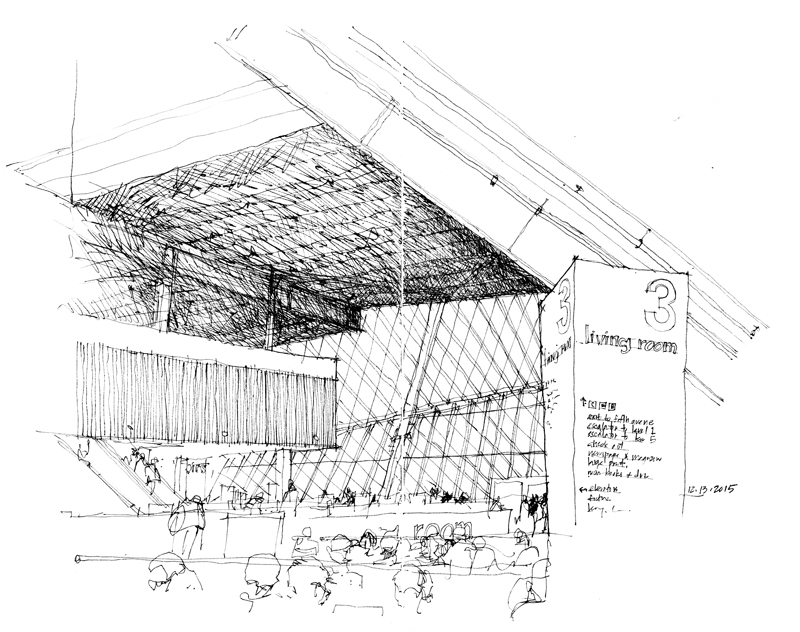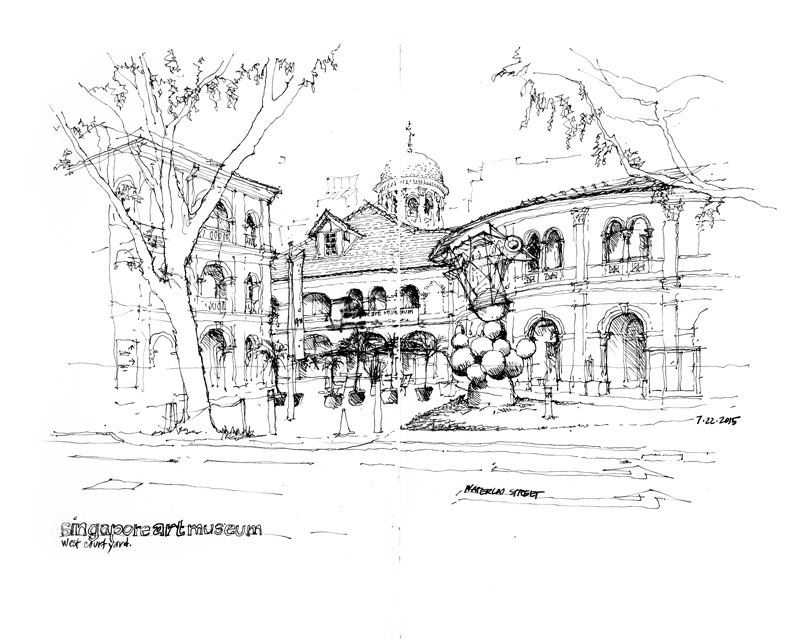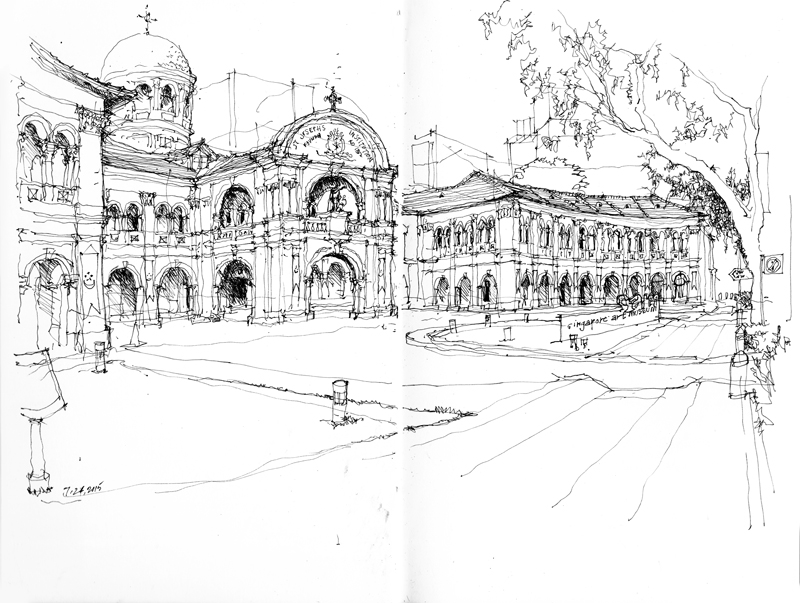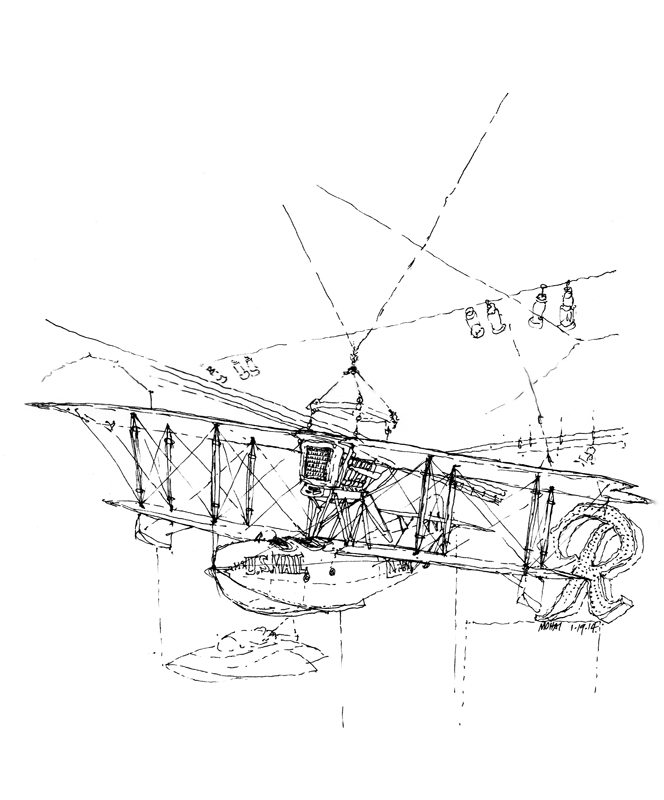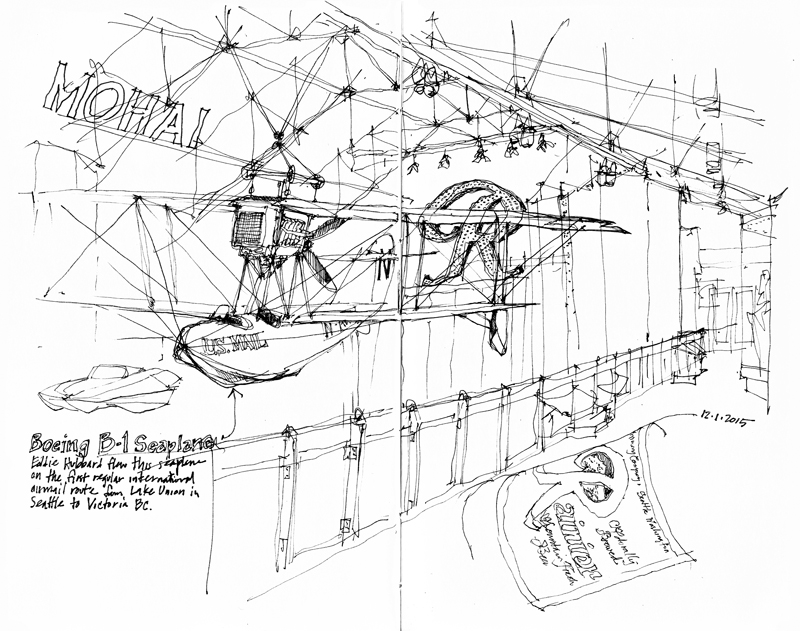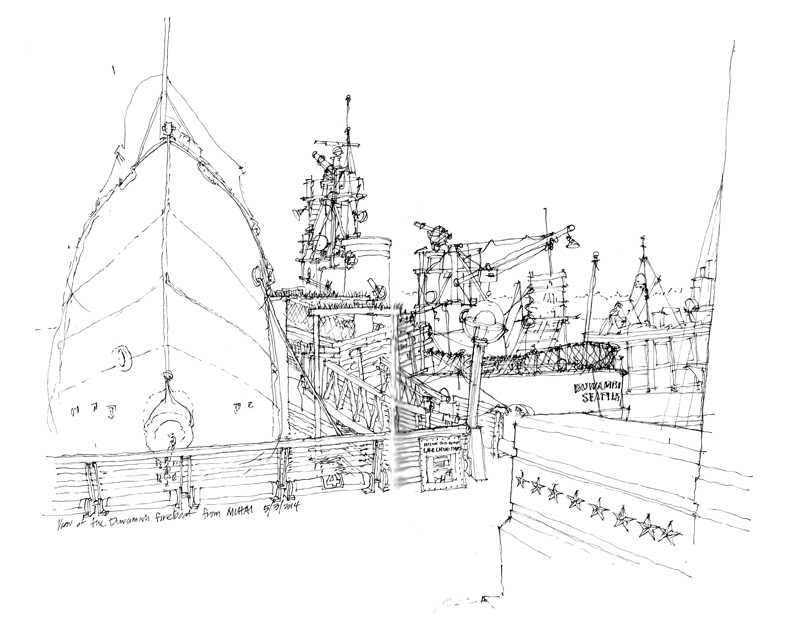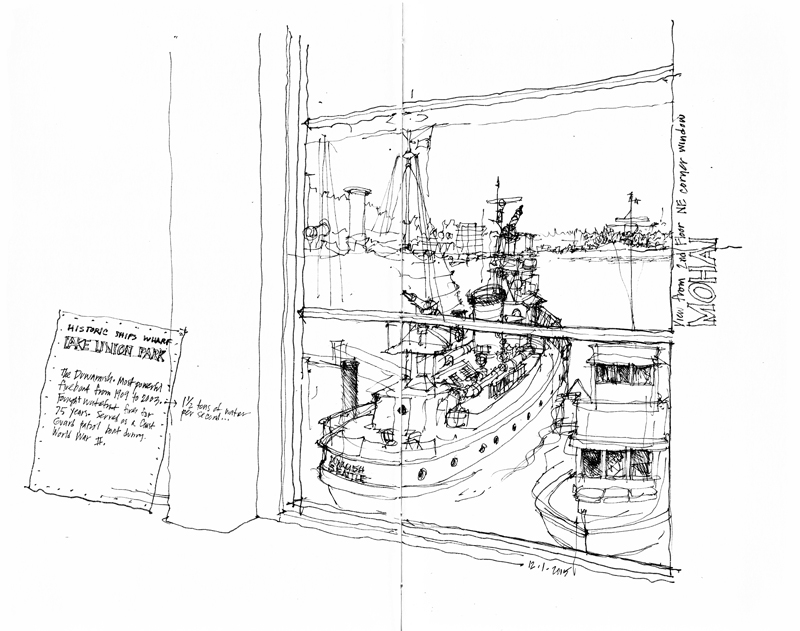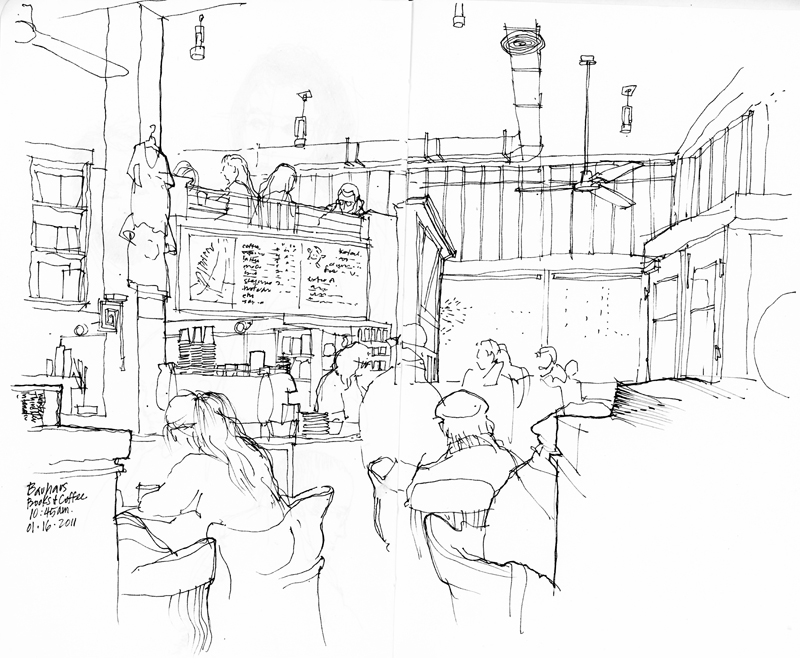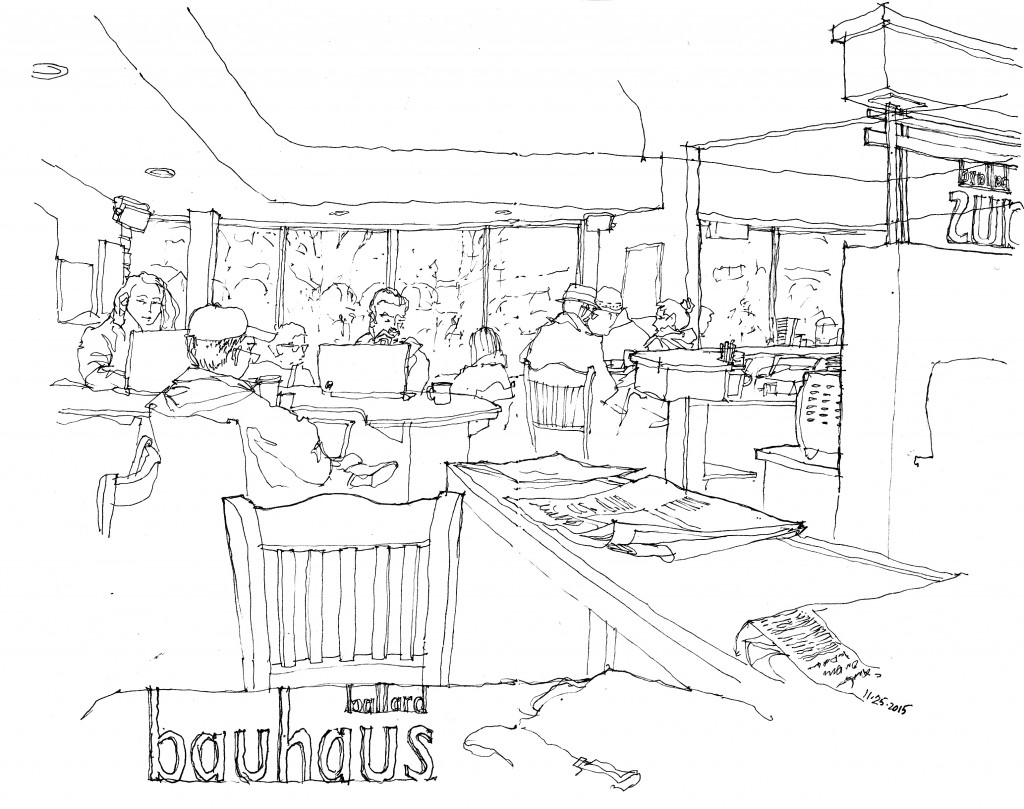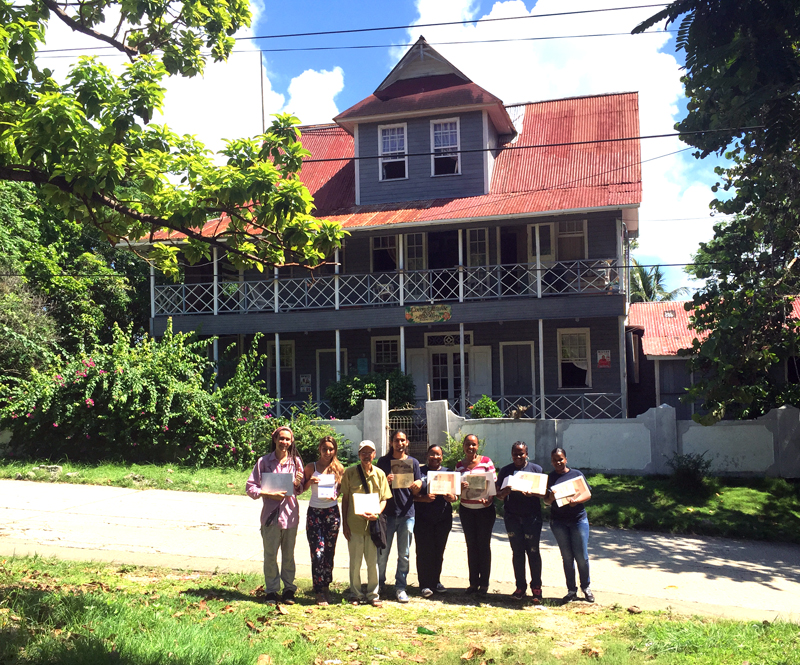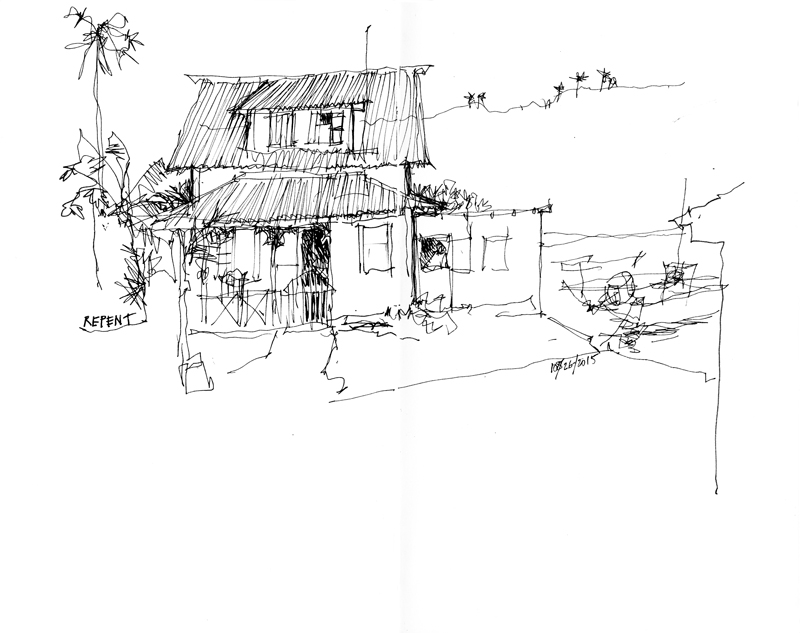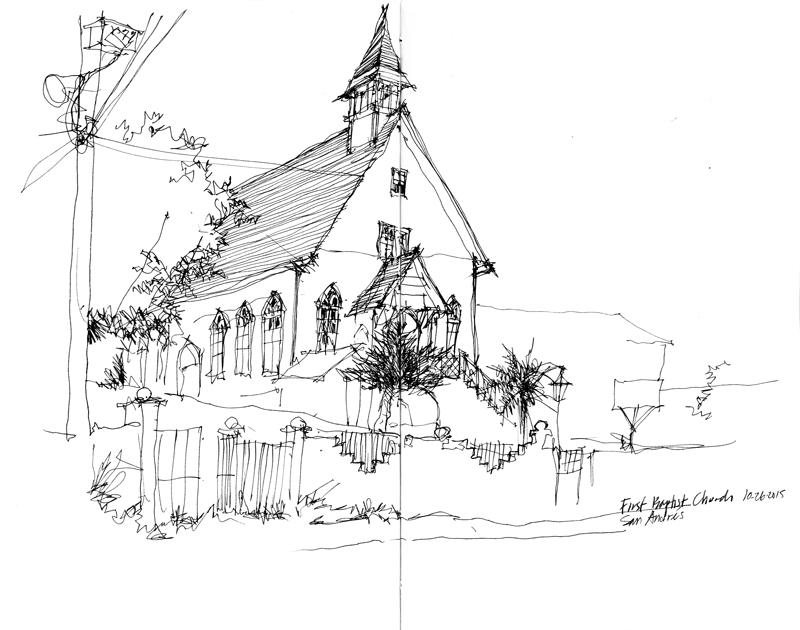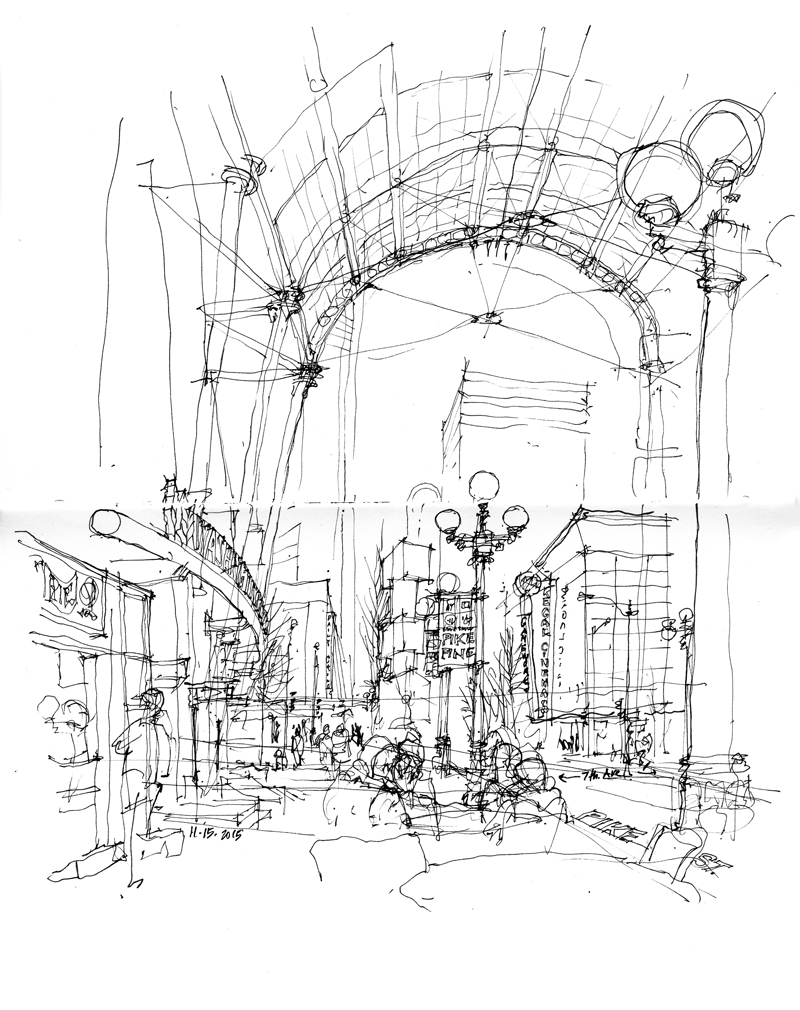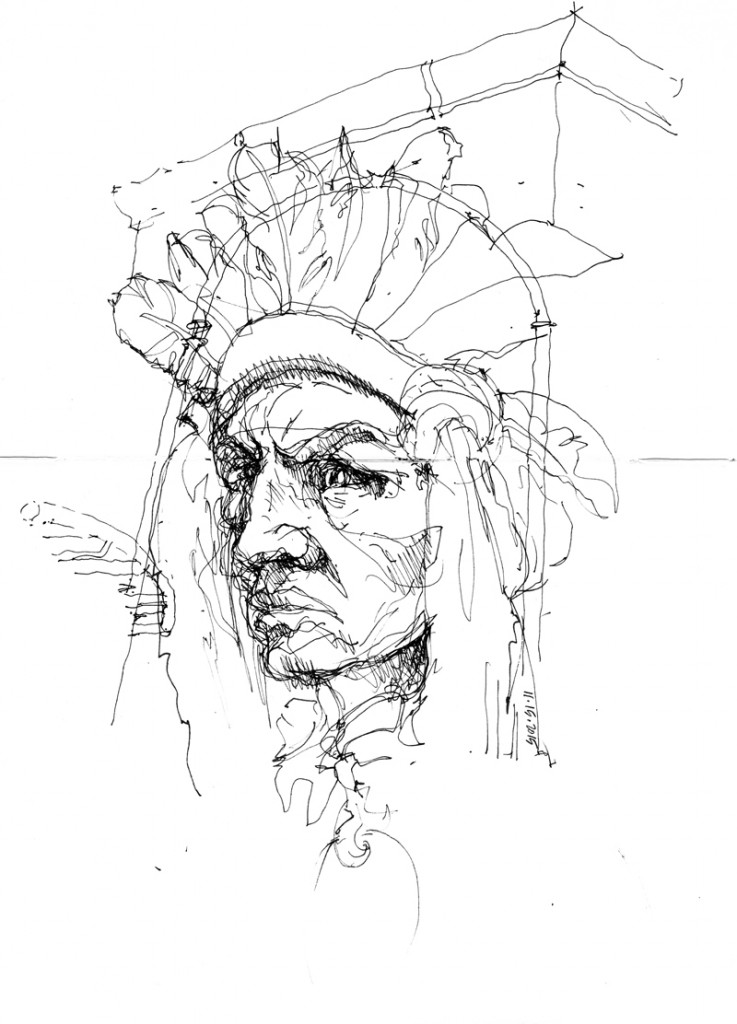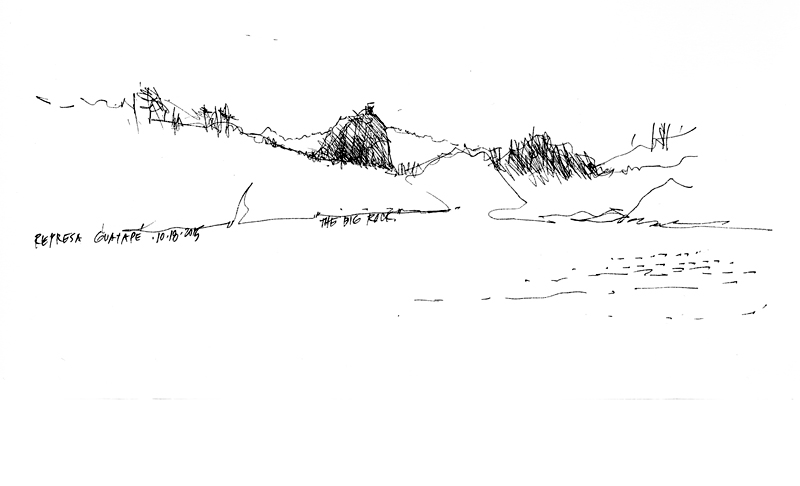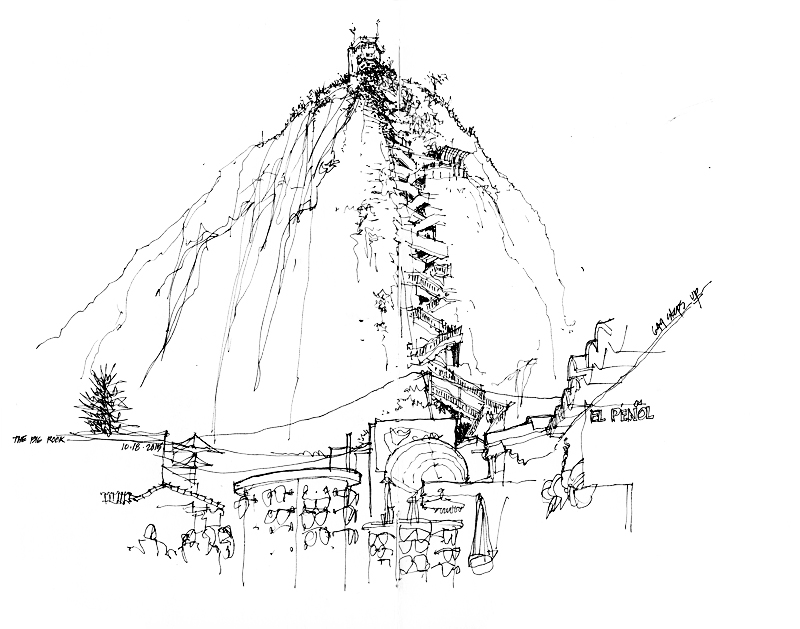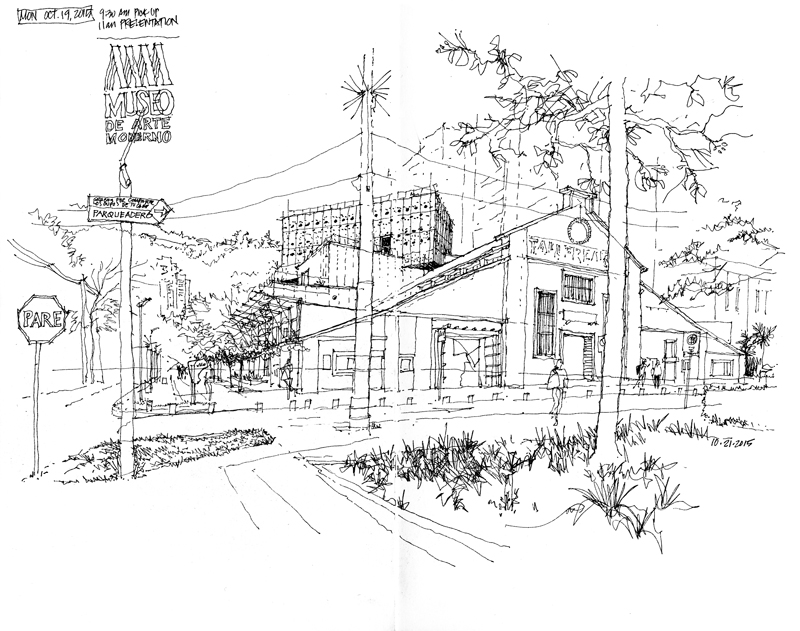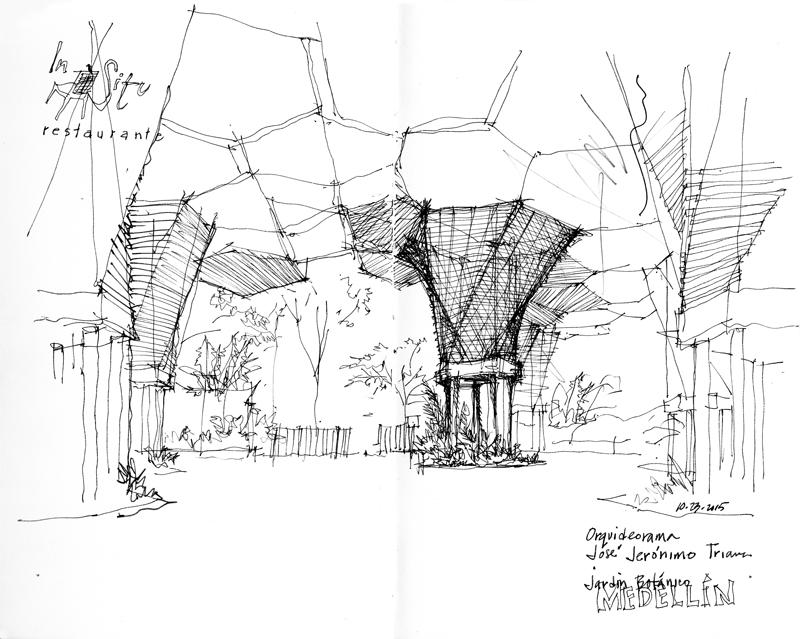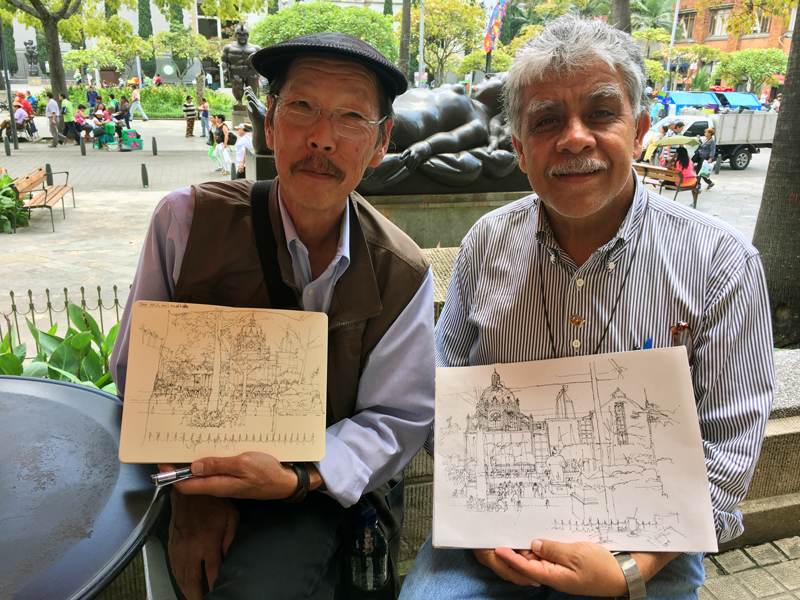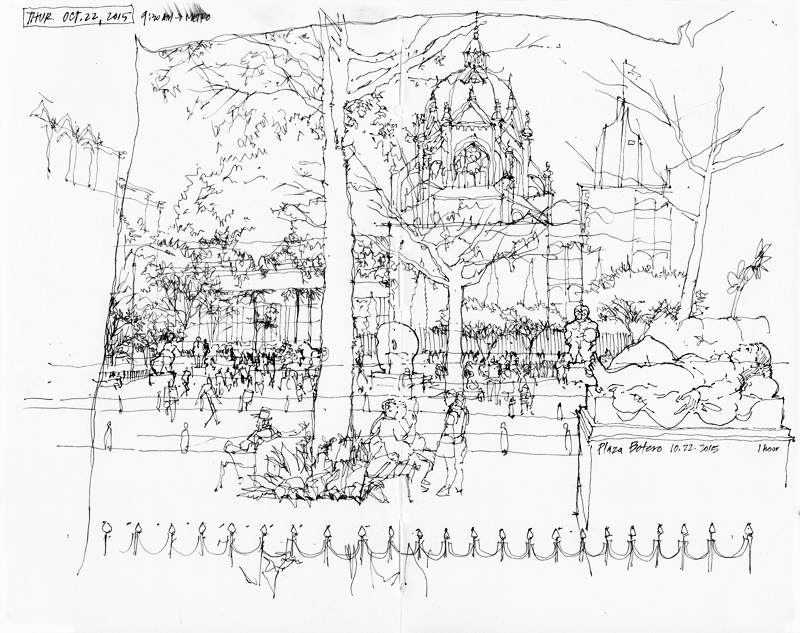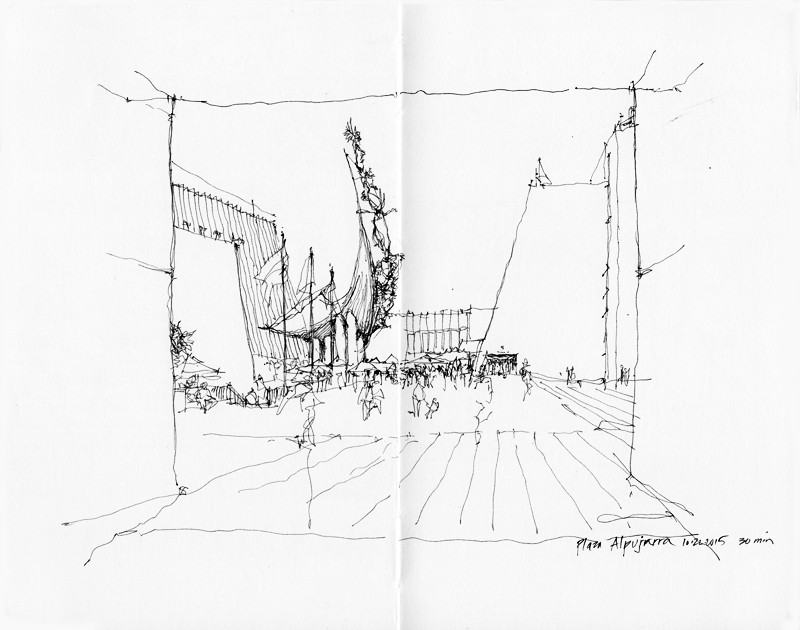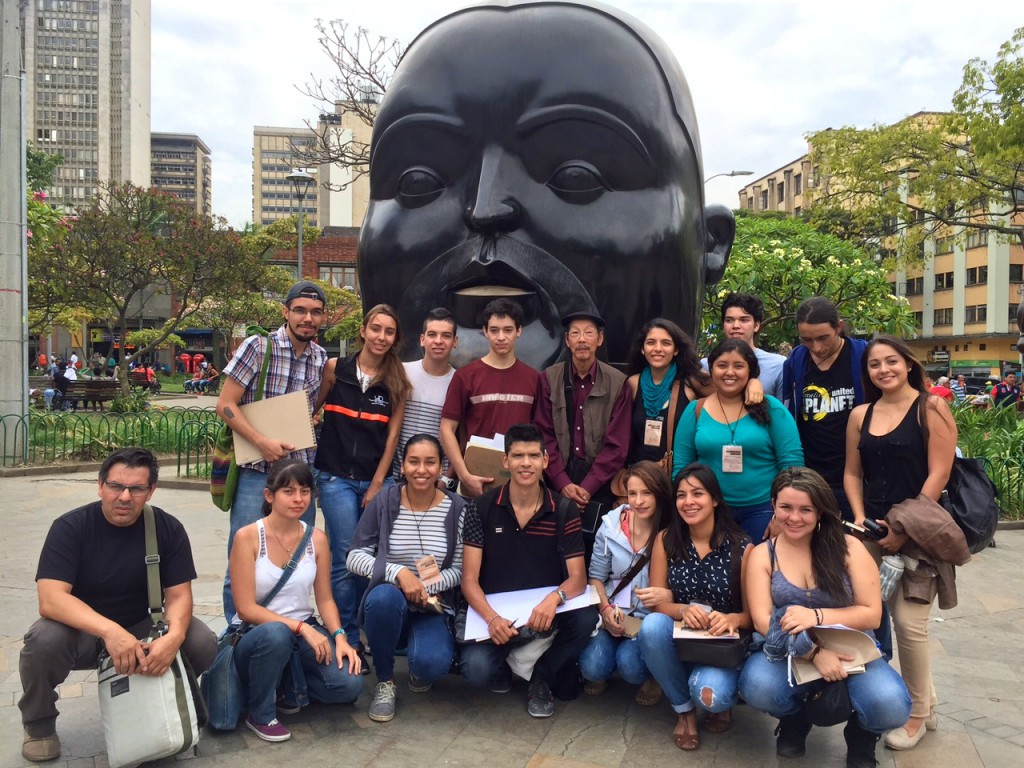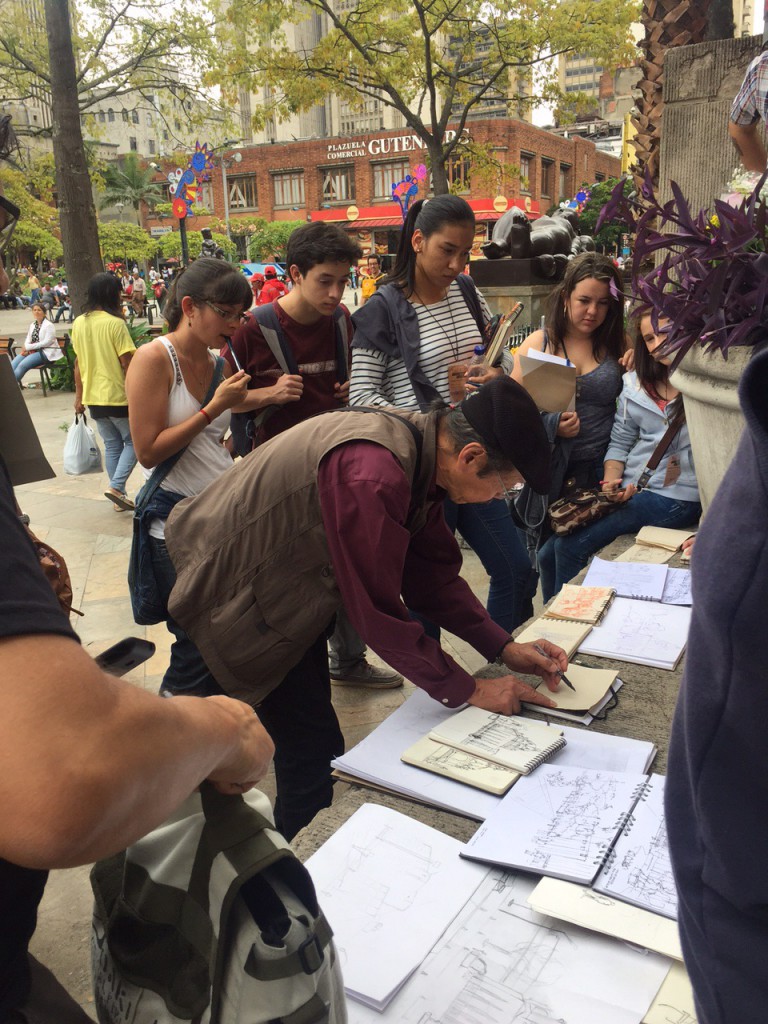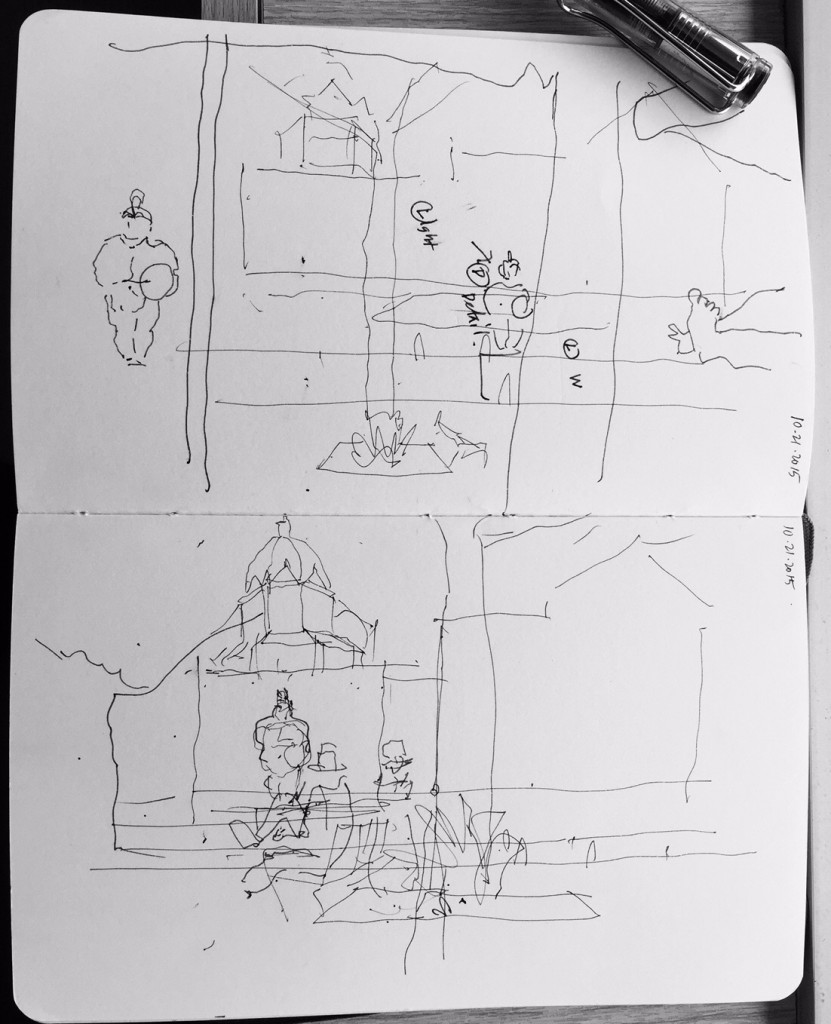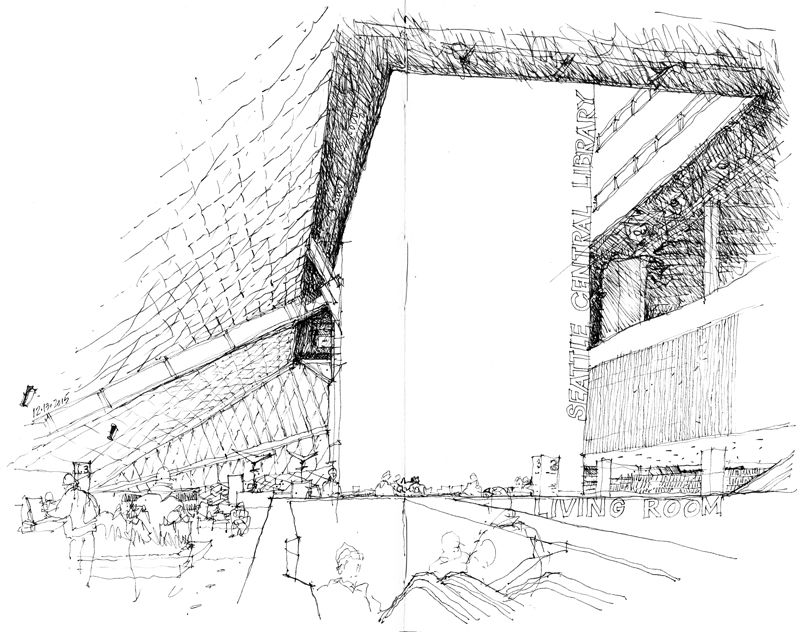 The December meeting of the Seattle Urban Sketchers took place at the Seattle Central Library, where I drew these two views of the Norcliffe Foundation Living Room. Serving as a general purpose reading area adjacent to a coffee shop and gift shop, the Living Room is part of the largest of the dynamic spaces in the library designed by Rem Koolhaaus and Joshua Prince-Ramus of OMA in collaboration with LMN Architects.
The December meeting of the Seattle Urban Sketchers took place at the Seattle Central Library, where I drew these two views of the Norcliffe Foundation Living Room. Serving as a general purpose reading area adjacent to a coffee shop and gift shop, the Living Room is part of the largest of the dynamic spaces in the library designed by Rem Koolhaaus and Joshua Prince-Ramus of OMA in collaboration with LMN Architects.
In one sense, the irregular geometry of such spaces can be easier to draw since any deviation from what actually exists may be difficult to discern. On the other hand, what is important to convey is a sense of the scale and 3-dimensional volume of the space.

